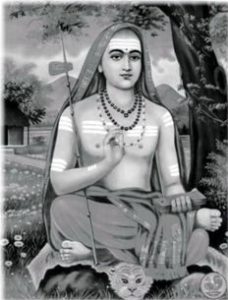Q: On your website it seems that, in the ‘Question and Answer’ section, it implies that there is an individual soul going from body to body. But in this interview from your same site Ramesh Baleskar explains how that is not the case:
http://www.advaita.org.uk/discourses/teachers/interview_balsekar3.htm
Could you please help clarify the truth?
A: Glad you find the site useful. I presume you know that I hardly ever change the advaita.org.uk site these days. All of the new material goes to https://www.advaita-vision.org/ and has done for the past 10+ (?) years.
The ‘truth’ of Advaita is that there is only Brahman. ‘Everything’ is Brahman. ‘You’ are Brahman. And, pedantically, that is all you can really say. But of course simply telling someone that is unlikely to enlighten them! Accordingly, there are lots of ‘prakriyā-s’ (ways of explaining things, stories, techniques etc.) to help seekers move their understanding in the right direction. Traditional Advaita has many of these, proven over several thousand years to be helpful in explaining things. For example, karma and reincarnation are fundamental to these. The jīva is ‘trapped’ in saṃsāra – the eternal round of birth and death – until Self-knowledge dawns and saṃsāra is ended. But this is only a prakriyā. In reality, there is only Brahman. There has never been any creation and no one has ever been born, let alone re-born.
Continue reading

 We all know that the shruti predominantly adopts the model of adhyAropa–apavAda (superimposition – sublation) in imparting the incommunicable Advaita message. There are other types of models and prakriyA-s also available in the scripture and tradition but they do not seem to be as popular. The adhyAropa–apavAda model superimposes an “imagined” or illusory creation on the really real Reality and as the student ingests the core Advaitic teaching, the superimposition is sublated. We find, however, that the shruti spends more time dealing with diverse aspects of the superimposed creation (birth, sustenance, death, action, fruits of action, rebirth etc.), the sublation being left to the ingenuity of the student as s/he reaches her/ his final understanding. One teacher estimates that Shankara in general devotes 90 percent of his time in most of his works on expiation of the Advaita doctrine and the attendant practices, leaving only a minor part on sublation and the outcome of the practices. This situation in some quarters has given rise to an insistence that the shruti teaches creation and that we have to take only the shruti vAkya-s and Shankara’s commentary on them as the pramANa (reference standard) for understanding the Advaita message forsaking other methods and vAkya-s in the scripture. Is that the intention of shruti? What is the final position of the shruti about creation from an Advaita perspective?
We all know that the shruti predominantly adopts the model of adhyAropa–apavAda (superimposition – sublation) in imparting the incommunicable Advaita message. There are other types of models and prakriyA-s also available in the scripture and tradition but they do not seem to be as popular. The adhyAropa–apavAda model superimposes an “imagined” or illusory creation on the really real Reality and as the student ingests the core Advaitic teaching, the superimposition is sublated. We find, however, that the shruti spends more time dealing with diverse aspects of the superimposed creation (birth, sustenance, death, action, fruits of action, rebirth etc.), the sublation being left to the ingenuity of the student as s/he reaches her/ his final understanding. One teacher estimates that Shankara in general devotes 90 percent of his time in most of his works on expiation of the Advaita doctrine and the attendant practices, leaving only a minor part on sublation and the outcome of the practices. This situation in some quarters has given rise to an insistence that the shruti teaches creation and that we have to take only the shruti vAkya-s and Shankara’s commentary on them as the pramANa (reference standard) for understanding the Advaita message forsaking other methods and vAkya-s in the scripture. Is that the intention of shruti? What is the final position of the shruti about creation from an Advaita perspective? 
